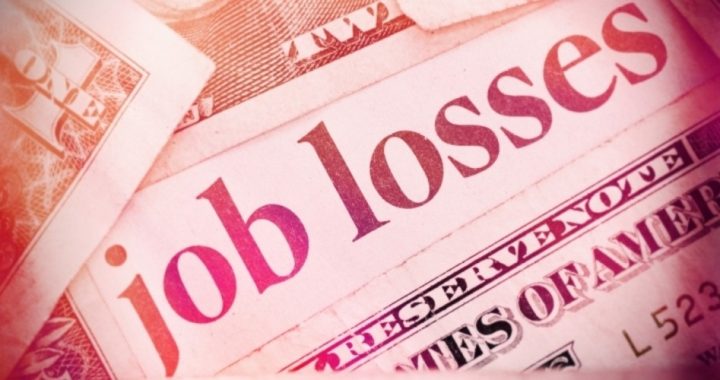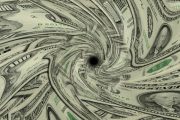
The Bureau of Labor Statistics has announced another of the grim societal sequelae of the Chinese Virus: The number of unemployed Americans jumped almost 25 percent to more than seven million.
Having reached an all-time 50-year low of 3.6 percent in April last year, then having dropped to 3.5 percent in four of the last seven months, the jobless rate increased to 4.4 percent in March.
Yesterday, the Labor Department announced that 10 million Americans had filed unemployment claims in the last two weeks.
Upshot: At least for now, the amazing economy the nation enjoyed since President Trump took office is done for.
The Latest Numbers
“Total nonfarm payroll employment fell by 701,000 in March, and the unemployment rate rose to 4.4 percent,” BLS reported. “The changes in these measures reflect the effects of the coronavirus (COVID-19) and efforts to contain it.”
As well, the jump was the largest over one month since January 1975, which also increased 0.9 percent. February’s measure was 3.5 percent.
In February, 5.7 million Americans were unemployed. The Chinese Virus moved that number to 7.1 million in March.
“The number of unemployed persons who reported being on temporary layoff more than doubled in March to 1.8 million,” the agency reported, and the “permanent job losers increased by 177,000 to 1.5 million.”
Bars, restaurants, hotels, and other leisure and hospitality employers took the brunt of the hit, losing 459,000 jobs, although “notable declines also occurred in health care and social assistance, professional and business services, retail trade, and construction,” the bureau reported.
The bar and restaurant industry lost 417,000 of that total, which erased gains during the last two years. The hotel industry lost 29,000 jobs.
Healthcare and social assistance lost 61,000 jobs, while dentists, doctors, and other healthcare practitioners lost 43,000. Healthcare employment had gained 374,000 jobs during the previous year.
Other sectors that lost jobs included:
• Professional and business service: 52,000
• Temporary services: 50,000
• Total retail: 46,000 (clothing and accessories: 16,000; furniture stores: 10,000; sporting goods, hobbies, books, and music: 9,000)
• Total construction: 29,000 (Nonresidential building: 11,000; Heavy and civil engineering construction: 10,000)
• Other services: 24,000
• Child care: 19,000
• Manufacturing: 18,000
• Travel agencies: 7,000
• Mining: 6,000
Not surprisingly, federal government employment rose 18,000 thanks to the hiring of 17,000 census takers.
A bright spot in the report is an increase in hourly wages for private non-farm workers of 11 cents to $28.62. Private-sector production and non-supervisory employees enjoyed a 10-cent boost to $24.07 an hour. And during the past year, average hourly wages have jumped 3.1 percent.
The numbers from BLA are no surprise given yesterday’s news that unemployment claims in the last two weeks numbered 10 million: more than 6.6 million in the week ending March 28, and more than 3.3 million in the week ending March 21.
Virus Spreads
Bad as those numbers are, they might worsen given the rate at which the Chinese Virus is spreading.
Overnight, global cases surpassed one million, the Johns Hopkins virus map shows, while fatalities climbed past 55,000. Recoveries are more than 220,000.
In the United States, documented cases are nearing 250,000, with deaths at more than 6,000. Recoveries are approaching 10,000.
As the states go, the Centers for Disease Control reports that New York is the hardest hit with nearly 85,000 cases. New Jersey reports more than 20,000.
The states suffering the least are the Dakotas (North, 147; South, 129), Alaska (143), Wyoming (137), and West Virginia (191).
Experts say the virus spread to humans in the so-called wet markets of China, specifically Wuhan, where vendors keep wildlife and exotic animals such as bats, along with household pets such as cats and dogs, trapped in filthy cages. The animals are sold for human consumption.
A reporter for London’s Daily Mail found the markets are still open.
CDC explains that the “SARS-CoV-2 virus is a betacoronavirus, like MERS-CoV and SARS-CoV. All three of these viruses have their origins in bats. The sequences from U.S. patients are similar to the one that China initially posted, suggesting a likely single, recent emergence of this virus from an animal reservoir.”
Early on, many of the patients at the epicenter of the outbreak in Wuhan, Hubei Province, China had some link to a large seafood and live animal market, suggesting animal-to-person spread. Later, a growing number of patients reportedly did not have exposure to animal markets, indicating person-to-person spread.
Sixteen percent of those who contract the pathogen will suffer severe symptoms, CDC reports, and “80% of deaths were among adults 65 years and older with the highest percentage of severe outcomes occurring in people 85 years and older.”
Image: MCCAIG
R. Cort Kirkwood is a long-time contributor to The New American and a former newspaper editor.




